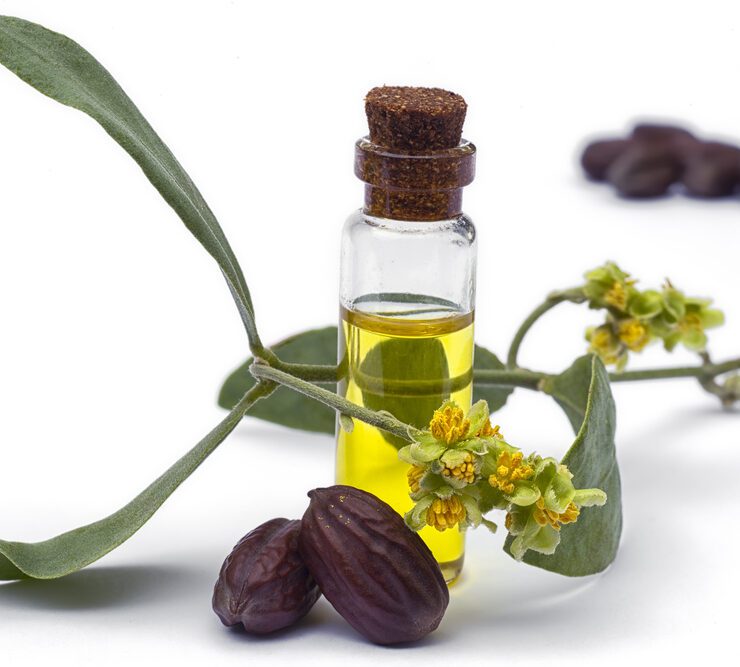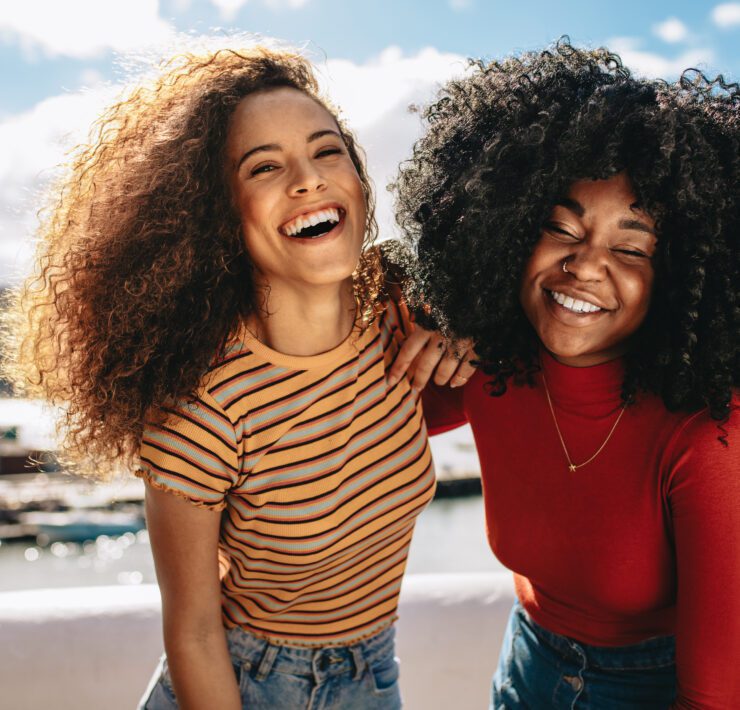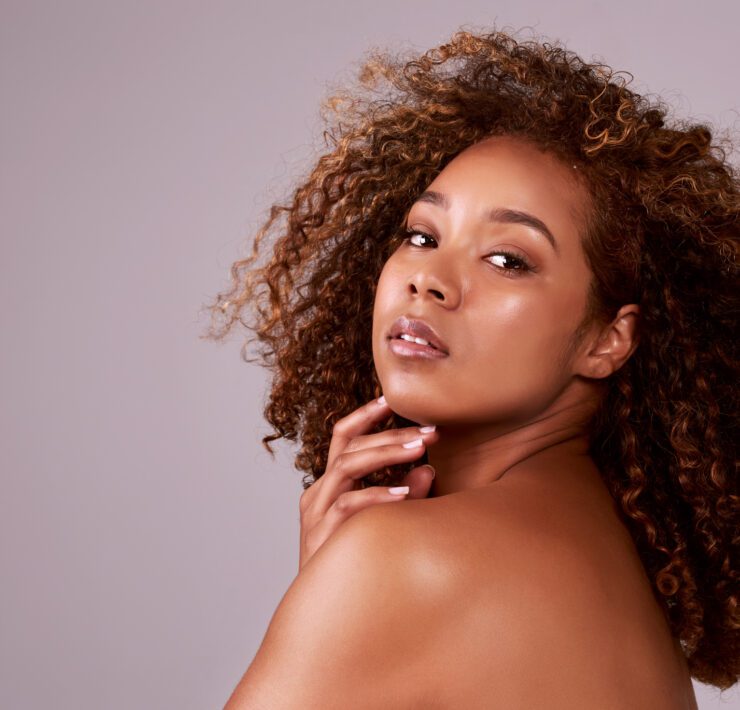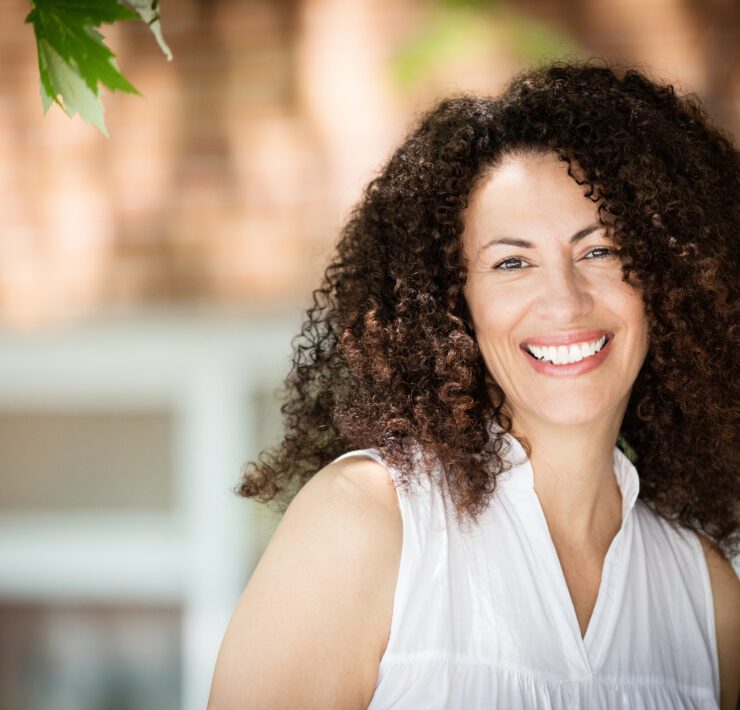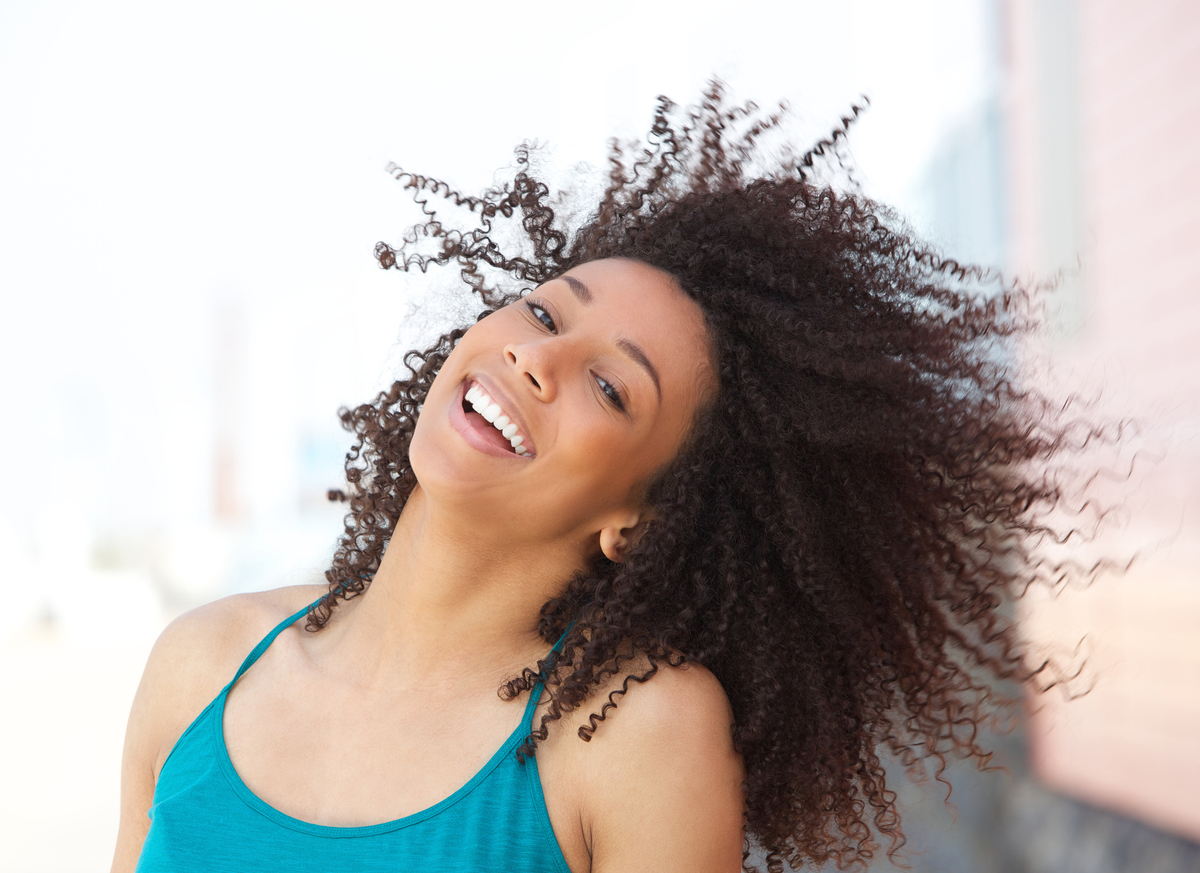
Decoding hair product labels to choose the right hair care products is essential for our curly hair. This guide to ingredients will help you understand the hair product formulations that effectively nurture and improve our curls, or result in dry and frizzy hair.
In this post, we’ll unravel the mysteries behind ingredient labels, equipping you with the knowledge to decode hair product labels to make educated decisions that best suit your curls (and save you money!).
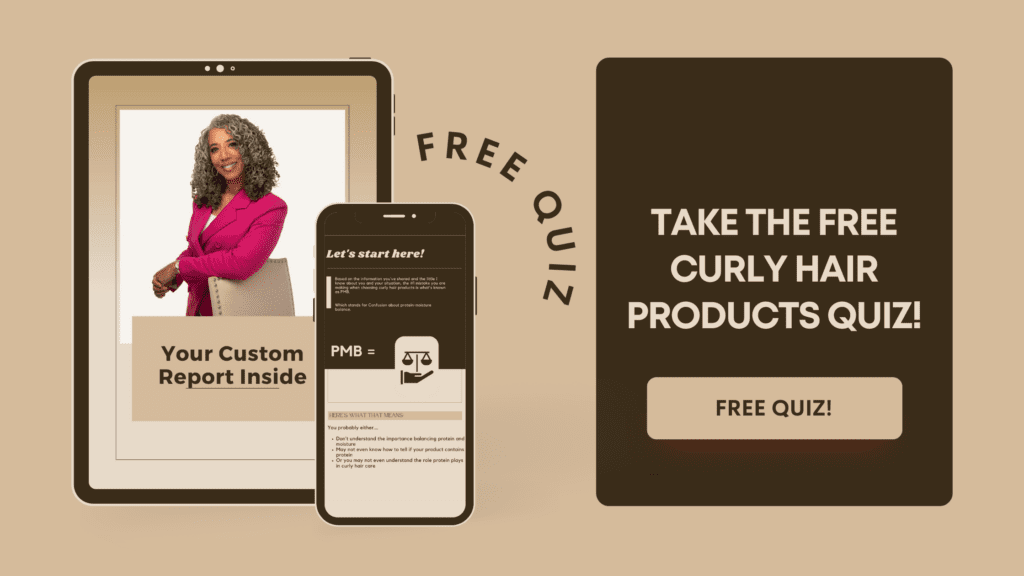
Decoding Hair Product Labels: Ingredient Order and Concentration
One of the most important aspects of an ingredient label is the order in which the ingredients are listed. Ingredients are typically listed in descending order by concentration, with the first ingredient being present in the highest amount and the last ingredient being present in the lowest amount. This means that the first five to six ingredients generally make up the majority (85%) of the product. The first ingredient listed is typically present in the highest amount and is often water (generally anywhere from 50-80%).
However, it’s important to note that ingredients making up less than 1% of the formula can be listed in any order at the end of the ingredients list. While exact percentages are rarely disclosed, this ordering system provides a general idea of the relative concentrations of each ingredient.
Water: The Primary Component
Water is a ubiquitous ingredient in curly hair products, often listed as “aqua” or “eau.” Its presence serves multiple purposes. Firstly, water acts as a hydrating agent for your hair and scalp, providing essential moisture. Additionally, it helps to thin out the product’s consistency, allowing for easier application and distribution throughout the hair.
If water is not listed as the first ingredient, the product is likely to have a thick, concentrated texture, which can make it challenging to apply evenly. However, it’s important to note that the exact percentage of water in a formulation is rarely disclosed, making it difficult to determine the precise concentration of other ingredients.
Some brands intentionally use less water in their formulas, resulting in more concentrated products that are more expensive. These concentrated formulas often require less product during application, as they are more potent. Unfortunately, this information is not typically provided on the product label itself, so researching the brand or paying attention to the recommended usage instructions can help gauge the level of concentration.
While the presence of water as the first ingredient generally indicates a lighter, more water-based formula, the absence of water in a product does not mean the product is superior. It simply suggests a more concentrated formulation, which may require adjustments in application techniques and quantities used.
Decoding Hair Product Labels: Substances derived from plants, algae, or fungi
Substances derived from plants, algae, or fungi are usually indicated by their botanical (latin) name, with the common name indicated in parentheses. For example, the botanical names can make the ingredient list appear very long and complicated but as you can see, you just can focus on the common name. Some of these ingredients, such as essential oils, are typically only present in small amounts. Essential oils must be diluted as they are too strong to use in concentrated (undiluted) form.
Here are some examples of plant based products:
Butyrospermum parkii (Shea butter)
Cocos nucifera (Coconut) Oil
Ricinus communis (Castor) Seed Oil
Helianthus annuus (Sunflower) Seed Oil
Prunus Amygdalus dulcis (Sweet almond) Oil
Lavandula Angustifolia (Lavender)
Rosmarinus Officinalis (Rosemary)
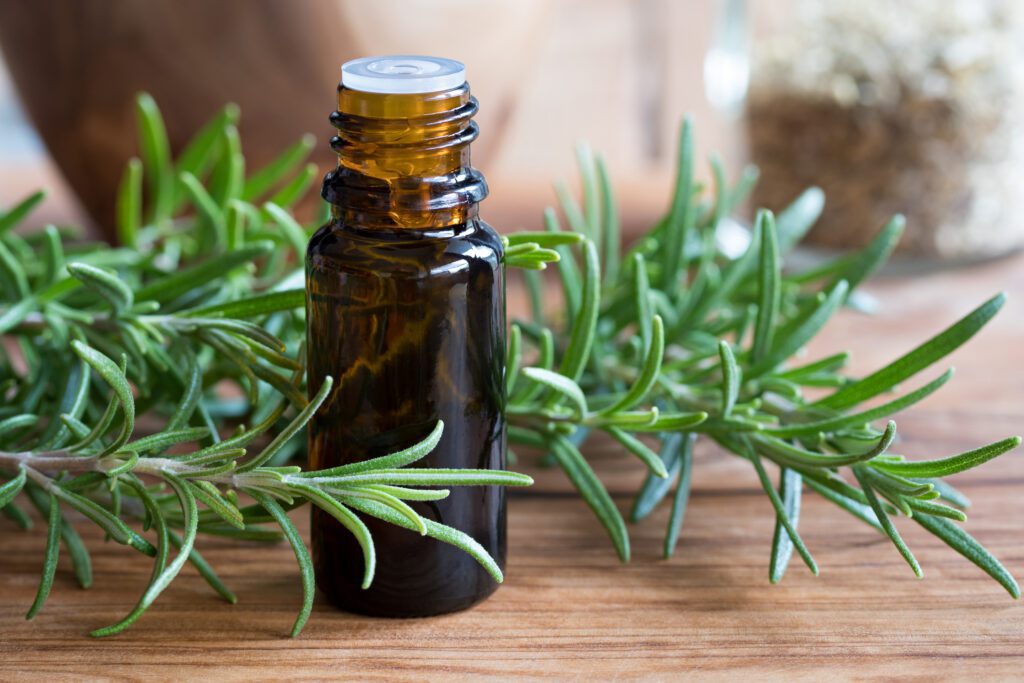
International Nomenclature of Cosmetic Ingredients (INCI)
Ingredient labels follow the International Nomenclature of Cosmetic Ingredients (INCI) system, which standardizes ingredient names across different languages and regions. This system ensures consistency and clarity in labeling, making it easier for consumers to identify and understand the ingredients in their products.
This website is helpful when learning and discovering the names of ingredients: https://incibeauty.com. This website is useful to figure out ingredient function: https://incidecoder.com/.
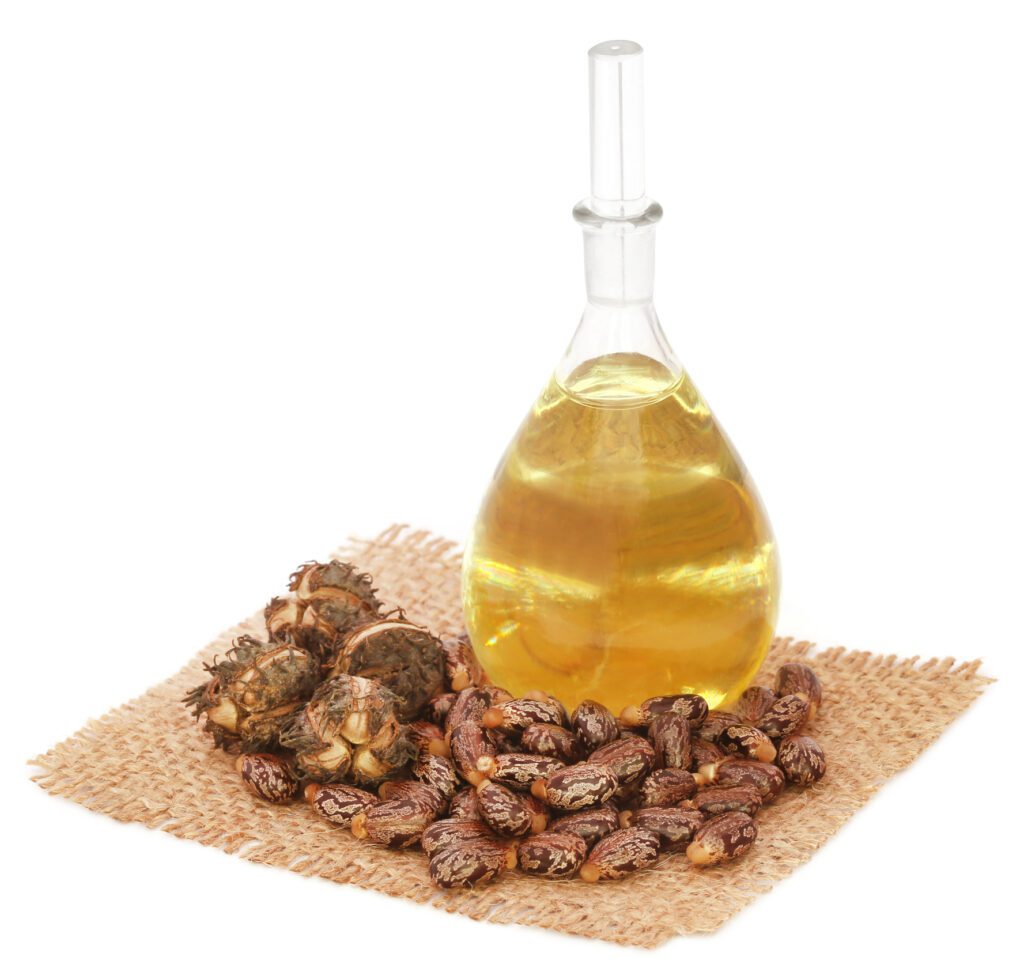
Decoding Hair Product Labels: The Period After Opening (PAO) symbol
The Period After Opening (PAO) symbol identifies the useful lifetime of a cosmetic product after the package has been opened for the first time. It is indicated by a letter and number. A product with a 6 month (6M) shelf-life typically looks like this:
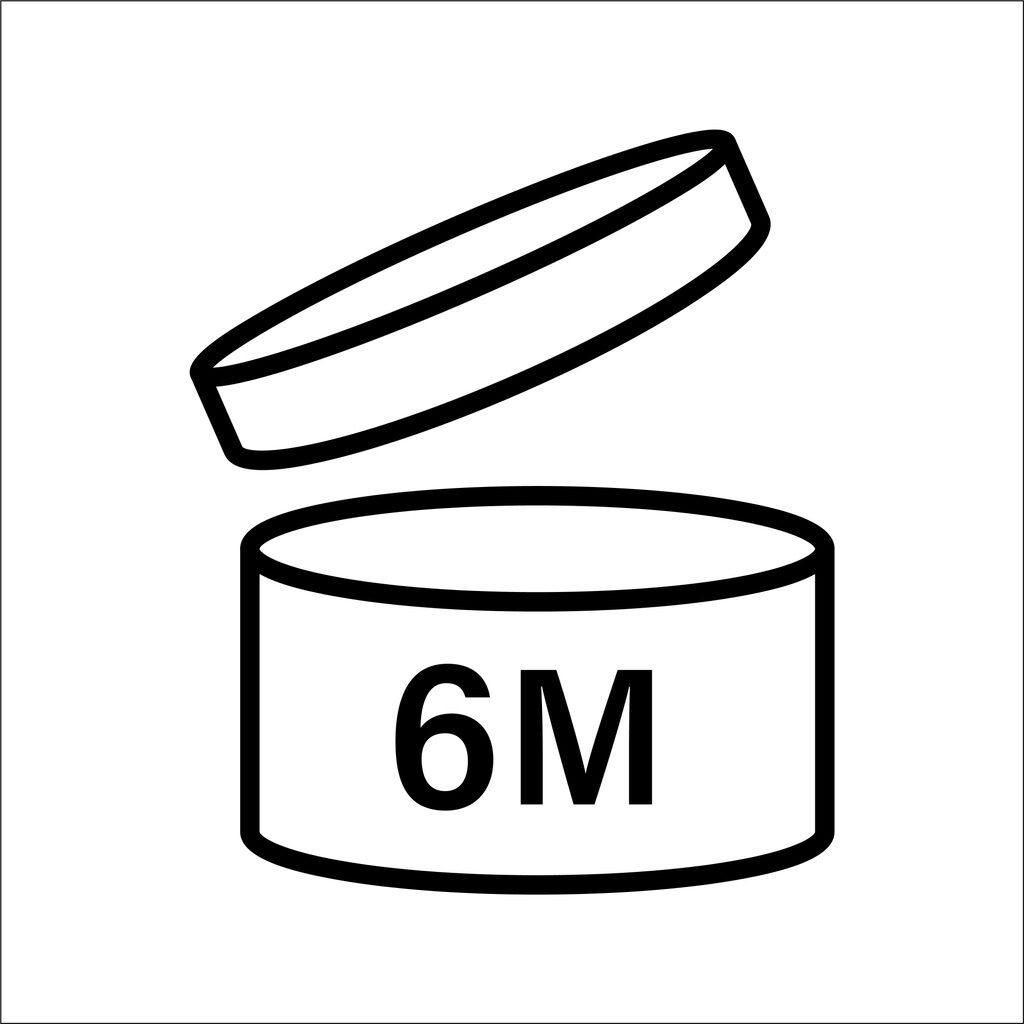
Decoding Hair Product Labels: Frequently Used Moisturizing Ingredients in the best Hair Products
Moisturizing ingredients such as emollients and humectants are essential for maintaining healthy, curly hair. However, their position and concentration in the ingredient list determine their impact.
Fatty alcohols are the so-called “good” alcohols. They tend to be oilier and thus, more slippery and lubricating. This quality helps smooth down the cuticle thereby reducing friction and providing shine to the hair.
Popular fatty alcohols that provide slip include:
Behenyl alcohol
Cetearyl alcohol
Cetyl alcohol
Isocetyl alcohol
Isostearyl alcohol
Lauryl alcohol
Myristyl alcohol
Stearyl alcohol
Other moisturizing ingredients great for detangling and smoothing include:
Behentrimonium methosulfate
Cetrimonium chloride
Aloe barbadensis (aloe vera) juice
Marshmallow root, flaxseed, slippery elm
Butters (e.g., shea butter, mango butter, cocoa butter)
Oils (e.g., coconut oil, argan oil, jojoba oil)
These ingredients deliver the slippery smoothness commonly linked with products that facilitate easy detangling. For further insights into “slip,” explore our blog post The Big Slip.
Decoding Hair Product Labels: Protein in Hair Products
Proteins differ in their composition and their absorption to, and into, the hair. Certain proteins are small enough to be absorbed into the hair strands. Amino acids and hydrolyzed proteins exemplify such smaller proteins. In particular, hydrolyzed proteins and amino acids are small enough to be easily absorbed into and onto the hair strand, where they can fill in gaps and smooth the cuticle layer. In addition, hydrolyzed proteins have the potential to aid in the retention of moisture within the hair.
This blog post tells you all you need to know about proteins! Protein acts as a building block for hair, strengthening the strands and preventing breakage. However, not all proteins are alike, and your curls may respond better to some varieties over others. Blindly avoiding protein could deprive your hair of the nourishment it craves. How to assess your hair’s protein-moisture balance.
Popular hydrolyzed proteins include:
- Hydrolyzed silk protein
- Hydrolyzed soy protein
- Hydrolyzed wheat protein
Indicators of other proteins in a curly hair product:
amino acids (some examples include cysteine and tyrosine)
peptides
keratin
collagen
silk
biotin
casein
Here are a few examples of my favorite conditioners with moisturizing ingredients:
Ecoslay Banana Cream Deep Conditioner:
Ingredients: Abelmoschus esculentus (okra) extract, Althaea officinalis (marshmallow root) extract, Aloe barbadensis (aloe vera) juice, Cocos Nucifera (coconut) cream, Cetearyl Alcohol, Brassica napus (colza/rapeseed) oil, Persea americana (avocado) oil, Argania spinosa (argan) oil, Simmondsia chinensis (jojoba) oil, Propylene Glycol, Diazolidinyl Urea, Iodopropynyl Butylcarbamate, Musa sapientum (banana) extract.
Hairfinity’s Strengthening Amino Masque:
Ingredients: Aqua (Water), Aloe Barbadensis Leaf Juice (Aloe Vera), Cetyl Alcohol, Glycerin, Behentrimonium Methosulfate, Behentrimonium Chloride, Butylene Glycol, Fragrance, Hydrolyzed Vegetable Protein PG-Propyl Silanetriol, Cetrimonium Chloride, Simmondsia Chinensis Seed Oil (Jojoba Oil), Olea Europaea Fruit Oil (Olive Oil), Persea Gratissima Oil, Caprylic/Capric Triglyceride (Coconut Oil), Cetearyl Alcohol, Phenoxyethanol, Ethylhexylglycerin, Wheat Amino Acids, Hydrolyzed Wheat Protein, Hydroxyethylcellulose, Hydrolyzed Collagen, Organic Lavandula Angustifolia Oil, Thuja Occidentalis Leaf Oil, Organic Cinnamomum Zeylanicum Bark Oil, Rosmarinus Officinalis Leaf Oil, Thymus Vulgaris Flower/Leaf Oil, Organic Mentha Piperita Oil, Biotin, Dimethyl Sulfone (MSM), Keratin, Hydrolyzed Keratin, Equisetum Arvense Leaf Extract (Horsetail), Disodium EDTA
SheaMoisture Strengthen and Restore Conditioner
Water (Aqua), Butyrospermum Parkii (Shea) Butter, Cocos Nucifera (Coconut) Oil, Stearyl Alcohol, Cetyl Alcohol, Behentrimonium Chloride, Hydroxyethylcellulose, Panthenol, Glycerin (Vegetable), Simmondsia Chinensis (Jojoba) Seed Oil, Macadamia Ternifolia Seed Oil, Ricinus Communis (Castor) Seed Oil , Fragrance (Essential Oil Blend), Hydrolyzed Keratin, Mauritia Flexuosa Fruit Oil, Tocopherol, Aloe Barbadensis Leaf Juice, Hydrolyzed Vegetable Protein PG-Propyl Silanetriol, Hydrolyzed Rice Protein, Apple Cider Vinegar, Butylene Glycol, Acetyl Tetrapeptide-3, Niacin, Dextran, Trifolium Pratense (Clover) Flower Extract, Caprylhydroxamic Acid, Caprylyl Glycol, Mentha Piperita (Peppermint) Leaf Extract, Yeast Extract, Caramel
Decoding Hair Product Labels: Shampoos and Other Cleansing Agents
When it comes to shampoos, the cleansing agents or surfactants in the product are crucial ingredients to consider. Clarifying shampoos often contain harsher surfactants like ammonium lauryl sulfate, ammonium laureth sulfate, and sodium lauryl sulfate. These ingredients are designed to remove product buildup, dirt, and oils from the hair and scalp but can be drying to curly hair as they are often formulated at higher pH. Clarifying shampoos with sodium C14-16 olefin sulfonate are better options for those with curly and coily hair, as they typically have a lower (acidic) pH and are less drying.
Some curly hair influencers follow the Curly Girl Method and avoid ALL sulfates and silicones:
On the other hand, sulfate-free shampoos can contain milder surfactants like disodium cocoamphodipropionate, decyl glucoside, cocamidopropyl betaine, and trideceth-7 carboxylic acid. These gentler cleansers are less likely to strip the hair of its natural oils.
Silicones and Siloxanes
Silicones and siloxanes are often used in hair products to impart shine, smoothness, and frizz control. While they can provide temporary benefits, they can also build up on the hair over time, leading to dullness and weighing down the hair. Products containing silicones and siloxanes may require regular clarifying shampoos to remove buildup. Those with straight hair can use silicones and siloxanes without any issues as clarifying shampoos do not dry out their hair the way they do for curlies.
Decoding Hair Product Labels: Ingredients to Avoid
Depending on your hair type, concerns, and preferences, there may be certain ingredients you wish to avoid. For example, some individuals prefer to steer clear of sulfates, waxes, glycerin, and drying alcohols. Reading ingredient labels carefully can help you identify and avoid these ingredients if desired.
It’s important to note that if you have a confirmed allergy or sensitivity to a specific ingredient, you should avoid products containing that substance. Allergic reactions can range from mild irritation to severe consequences, so it’s best to err on the side of caution. Here is a list of common scalp irritants in hair products to be aware of.
And check out this video with Brad Mondo:
Now, let’s take a look at some hair product ingredients (especially the First Five ingredients listed). Here are a few examples of some popular hair products:
Product #1 is marketed as an intensive hair bond builder
Ingredients
Water (Aqua), Bis-Aminopropyl Diglycol Dimaleate, Sodium Benzoate, Phenoxyethanol
AEC Comment: The active ingredient, Bis-Aminopropyl Diglycol Dimaleate, rebuilds the damaged disulfide bonds in your hair. It is specifically designed to repair damaged hair from years of chemical treatment. It claims to rebuild the strength, integrity, and structure of your hair strands.
Product #2 is marketed as bond curl repair
Ingredients
Water (Aqua), Cetearyl Alcohol, Salvia Hispanica (Chia) Seed Extract, Creatine, Polyquaternium-10, Stearamidopropyl Dimethylamine, Lentinus Edodes (Shiitake) Extract*, Opuntia Tuna (Prickly Pear) Fruit Extract, Cucurbita Pepo (Pumpkin) Seed Extract*, Psidium Guajava (Guava) Fruit Extract, Prunus Amygdalus Dulcis (Sweet Almond) Oil, Ribes Nigrum (Blackcurrant) Fruit Extract, Brassica Oleracea Acephala (Kale) Leaf Extract, Leuconostoc/Radish Root Ferment Filtrate, Polyquaternium-37, Hydroxypropylgluconamide, Hydroxypropylammonium Gluconate, Disodium EDTA, Potassium Sorbate, Tartaric Acid, Citric Acid, Ethylhexylglycerin, Glycerin, Behentrimonium Chloride, Phenoxyethanol, Sodium Benzoate, Benzyl Alcohol, Geraniol, Fragrance (Parfum), Linalool, Limonene.
AEC Comment: The third ingredient in this product is Chia Seed Extract. According to the manufacturer, chia seeds are chock full of fiber, omega-3 fatty acids, protein, phosphorus, and calcium, making them a powerful hair strengthener. Not a bond builder like the one above.
Product #3 is marketed as grow and restore with peppermint and ACV
Ingredients:
Water (Aqua), Decyl Glucoside, Sodium Lauroyl Lactylate, Fragrance (Essential Oil Blend), Glycerin (Vegetable), Hydrolyzed Rice Protein, Panthenol, Hydrolyzed Vegetable Protein PG-Propyl Silanetriol, Guar Hydroxypropyltrimonium Chloride, Butyrospermum Parkii (Shea) Butter*, Ricinus Communis (Castor) Seed Oil, Mentha Piperita (Peppermint) Leaf Extract, Mauritia Flexuosa Fruit Oil, Hydrolyzed Keratin, Tocopherol, Aloe Barbadensis Leaf Juice, Vinegar, Yeast Extract, Niacin, Trifolium Pratense (Clover) Flower Extract, Caprylhydroxamic Acid, Caprylyl Glycol, Caramel.
AEC Comment: You will note that vinegar appears to be present in a low amount as it is not one of the First Five ingredients.
Product #4 is marketed as ACV shampoo for $30
Ingredients
Aqua (Water/Eau), Potassium Cocoyl Glycinate, Sodium Lauroyl Sarcosinate, Sodium Lauroyl Methyl Isethionate, Decyl Glucoside, Hydroxypropyl Methylcellulose, Acacia Concinna Fruit Extract, Balanites Aegyptiaca Fruit Extract, Gypsophila Paniculata Root Extract, Vinegar (Organic)
AEC Comment: Again, you can see that vinegar appears to be present at a low amount as it is not one of the First Five ingredients.
Compare to this $10 ACV product
Ingredients
Water (aqua), cetrimonium chloride, glycerin, polysorbate 20, apple cider (Pyrus malus)
AEC Comment: Apple cider vinegar is present in a higher amount and is cheaper at $10 than the one above, selling for $30.
Product #5 is marketed as a popular conditioner
Ingredients
Aqua / Water / Eau, Propylene Glycol, Myristyl Alcohol, Cetearyl Alcohol, Cetrimonium Chloride, Decyl Oleate, Phenoxyethanol, Parfum / Fragrance, Methylparaben, Aloe Barbadensis / Aloe Barbadensis Leaf Juice, Ethylparaben, Limonene, Hexyl Cinnamal, Coumarin, Linalool, Citric Acid, Passiflora Edulis Fruit Juice, Bisabolol
The generic version
Ingredients
Water, Propylene Glycol, Myristyl Alcohol, Cetrimonium Chloride, Cetearyl Alcohol, Phenoxyethanol, Decyl Oleate, Methylparaben, Fragrance, Propylparaben, Hydrastis Canadensis (Goldenseal) Extra, Fucus Vesiculosus Extract, Rosmarinus Officinalis (Rosemary) Leaf E, Glycerin
AEC Comment: The generic is similar to the branded product. Both products contain parabens, which some people try to avoid. Parabens serve as preservatives.
Product #6 is marketed as a high protein conditioner
Ingredients
Purified Water, Methylcellulose, Hydrolyzed Oats, Avocado Oil, Coconut Oil, Pro-Vitamin B5, Optiphen Plus, Natural Fragrances.
AEC Comment: The third ingredient is hydrolyzed oats, a protein.
Product #7 is marketed as a detangler
Ingredients
Organic Mango Fruit Extract, Organic Slippery Elm, Organic Marshmallow Root, Organic Lemongrass, Cetyl Alcohol, Behentrimonium Methosulfate, Citric Acid, Phenoxyethanol and Natural Fragrance.
AEC Comment: 100% natural.
Product #8 is marketed as a curling aid
Ingredients
Water, Glycerin, Carboxymethylcellulose, Aloe Barbadensis Leaf Extract, Pectin, Hydroxypropyltrimonium Honey, Silk Amino Acids, Hypnea Musciformis Extract (Seaweed), Gelidiella Acerosa Extract (Seaweed), Sargassum Filipendula (Seaweed) Extract, Sorbitol, Rosmarinus Officinalis (Rosemary) Leaf Extract, Salix Alba (Willow) Bark Extract, Urtica Dioica (Nettle) Extract, Ethylhexylglycerin, Phenoxyethanol, Citrus Sinensis Oil, Citrus Limon Oil, Citrus Aurantifolia Oil, Citrus Paradisi Oil, Fragrance (Phthalate Free)
AEC Comment: This product is high in glycerin. Glycerin can cause frizz in high humidity or dry climates.
Product #9 is marketed as a gel
Ingredients
Water, Organic Aloe Vera Juice, Aqueous-Infused Extracts of Marshmallow, Chamomile, Nettle & Horsetail, Vitamin E, Agave Nectar Extract, Citric Acid, Potassium Sorbate & Natural Fragrance
AEC Comment: 100% natural. No glycerin.
Product #10 is marketed as a curl activator
Ingredients
Water (Aqua, Eau), Glycerin, Propanediol, Fragrance (Parfum), Polyquaternium-10, Stearalkonium Chloride, Stearyl Alcohol, Cocos Nucifera (Coconut) Oil, Butyrospermum Parkii (Shea ) Butter, Aloe Barbadensis (Aloe Vera) Leaf Juice, Simmondsia Chinensis (Jojoba) Oil, Glycine Soja (Soybean) Oil, Prunus Amygdalus Dulcis (Sweet Almond) Oil, Persea Gratissima (Avocado) Oil, Olea Europaea (Olive) Fruit Oil, Mangifera Indica (Mango) Seed Butter, Argania Spinosa (Argan) Kernel Oil, Melia Azadirachta (Neem) Seed Oil, Daucus Carota Sativa (Carrot) Seed Oil, Lonicera Japonica (Honeysuckle) Flower Extract, Laminaria Cloustoni (Sea Kelp) Extract, Salvia Officinalis (Sage) Leaf Extract, Macadamia Ternifolia (Macadamia) Seed Oil, Vitis Vinifera (Grape) Seed Extract, Urtica Dioica (Nettle) Extract, Silk Amino Acids, Cetyl Alcohol, Cetearyl Alcohol, Polysorbate-60, Phenoxyethanol, Ethylhexylglycerin
AEC Comment: This product is high in glycerin, fragrance, and polyquat-10. Glycerin can cause frizz in high humidity or dry climates. Some polyquats like no. 10 bind to hair and can lead to build-up. Strong fragrances can cause allergic reactions in some people.
Product #11 is marketed as a shampoo for brittle hair
Ingredients
Aqua / Water, Sodium Laureth Sulfate, Coco-betaine, Glycerin, Sodium Chloride, Olea Europaea Leaf Extract / Olive Leaf Extract, Peg-60 Hydrogenated Castor Oil, Olea Europaea Fruit Oil / Olive Fruit Oil, Aloe Barbadensis Leaf Juice, Sodium Acetate, Sodium Hydroxide, Isopropyl Alcohol, Citric Acid, Polyquaternium-10, Hexylene Glycol, Potassium Sorbate, Sodium Benzoate, Salicylic Acid, Alpha-isomethyl Ionone, Limonene, Hexyl Cinnamal, Benzyl Alcohol, Benzyl Salicylate, Parfum / Fragrance
AEC Comment: This product contains a harsh sulfate, sodium laureth sulfate, the last thing you need if you have brittle, damaged hair.
Useful Science Based Blogs:
- http://science-yhairblog.blogspot.com/ (Wendy MS)
- https://curlychemistry.com/ (Tonya McKay)
- https://greenbeauty.com/ (Green Beauty)
- https://sisterscientist.com/ (Erica Douglas)
- https://themestizamuse.com (Verna Meachum)
- https://www.humblebeeandme.com/ (Marie Rayma)
- https://www.thenaturalhavenbloom.com (unknown)
- https://labmuffin.com/about-michelle/ (Michelle Wong)


